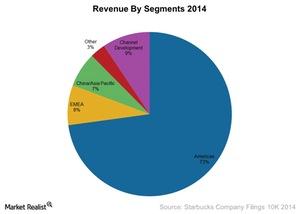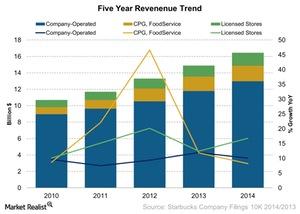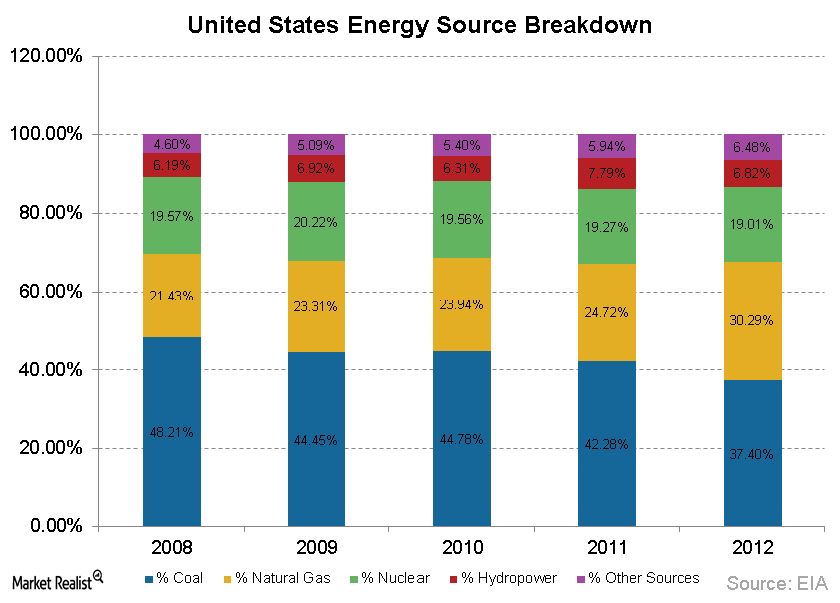Starbucks Corp
Latest Starbucks Corp News and Updates

Why The Americas Segment Is Important For Starbucks
The America’s segment includes revenues mainly from the US, Mexico, and Canada. This segment accounted for 73% of SBUX’s revenues in 2014.
Starbucks’ Coffee Has Three Revenue Sources
Consumer packaged goods, or CPG, include the sale of SBUX’s coffee and tea-related products—like single-serve tea and coffee products. It also includes several beverages at retail stores.Company & Industry Overviews Unit growth equally important for restaurants as same-store sales
Restaurants seek revenue growth in a variety of ways, but after exhausting all options, restaurants pursue a unit-growth strategy to capitalize on these opportunities.Company & Industry Overviews Restaurants add dayparts to increase sales
By opening restaurants for different dayparts such as breakfast, afternoon snacks, or late-night snacks, restaurants believe they will sell more products throughout the day and improve same-store sales.Company & Industry Overviews What drives restaurant same-store sales?
Same-store sales are driven by two factors: the number of customers walking into the stores and the average amount or average check those customers pay for an order.
Product innovation is Starbucks’ primary focus
Starbucks’ (SBUX) management states that product innovation will be its primary focus as it maintains a lesser focus on its coffee business.Consumer Must-know: Starbucks’ key value metrics—same-store sales
Same-store sales are one of the important drivers in the restaurant industry. Same-store sales directly drives the revenues. It measures the percentage change in the revenues generated by existing restaurant locations over the same period last year.
Why food will become more important to Starbucks’ future growth
As a primary coffee retailer, food has been a relatively minor part of Starbucks Corp.’s (SBUX) focus in the past. But lately, Starbucks has been expanding its product offerings for food.Consumer An industry advantage: Dunkin’ Brands’ operating costs are dieting
Dunkin’ Brands has a very low capital requirement relative to the rest of the coffee retail industry. This is due to its business model, centered around establishing franchises across the world.Consumer Must-know: Dunkin’ Brands is innovating the supply chain
Dunkin’ Brands Group doesn’t typically supply products to its franchises. Revenues derive from royalty fees as opposed to product distribution.Consumer Must-know risks: Why Starbucks should hedge its shrubs
Starbucks indicates that it uses derivative contracts to hedge commodity price risks. These contracts typically don’t have a lifespan longer than five years.Consumer A Starbucks on every corner: A guide to the SBUX business model
This business model has allowed Starbucks to be the first coffee firm to put retail locations in each of the BRIC nations and many more.Consumer Business overview: Why Starbucks deserves your attention
Starbucks began in 1971 as a single coffee shop in Seattle. Today, it’s the world largest coffee retailer, with over 19,000 locations in more than 60 countries (as of FY2013 end).
